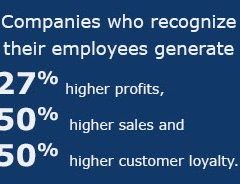21 Apr

- Set objectives and break them down to measurable key results.
- Set stretched goals to push employees to achieve their potential fully and beyond.
- Continuously track performance and revise Key Results for agility
- Involve employees in the process and take their inputs. Remember your employees are more than just a cog in the wheel.
- Ensure that employee goals are aligned to organizational objectives
- Make the employees feel included and help them identify with the whole process.
- Leave the implementation to the employees, once they accept the goals set.
- Goals need not be achieved 100% as they are set as stretched goals at the outset. 80% achievement of an OKR goal is more than 100% achievement of a non-stretched goal.
- Be flexible and learn as you go and provide autonomy to people even as you engage them.
Learn how PossibleWorks can help you
It isn’t possible for people to serve the interests of an organization and work towards achieving its goals effectively, without being engaged with them personally. How can we motivate people, who only work at a job because it helps them pay bills and stay employed? What can make them try to do their best and showcase performance which is worthy of special mention? Employee performance will not meet expectations, without having them engaged to the larger purpose for which the organization exists.. Companies that pay attention to employee engagement thrive and make more profits too.
Are employees who are happy at a workplace engaged? Not necessarily. Engagement also requires them to be aware of the performance expected of them, and to have clearly defined roles and goals. Because these are what translate to real engagement as they have a clear idea of their purpose at work and can actually measure themselves against the expectations, even without a performance review. They know that their work is having the necessary impact and would be interested to push their own boundaries to see if they can do even better.
When Peter Drucker proposed his MBO (Management by Objectives), he was strategizing to get managers from being caught up in an activity trap, where they were busy through an entire day without reference to business goals or organizational goals. Intel’s Andy Grove upgraded this by adding Key Results to Objectives, which help with performance management. Credited with having ensured company-wide growth by Google, the OKR methodology has been helping organizations to set goals and manage performance effectively to achieve success.
The Components of OKR Methodology

The way OKRs work ensures that organizational goals are clearly defined first. They’re then cascaded down to departments, teams and finally individual employee, setting them clear goals and outcomes to be achieved.
An organization through OKRs understands where it wants to be, and how to get there by breaking down larger firm-level objectives into goals/key results and cascading them down to each employee for effective performance tracking. Organizations both big and small benefit from the OKR Methodology, by helping employees to understand the impact of their efforts on the organization’s ability to achieve its goals.
- Objectives are aspiration statement that is directional in nature and are action-oriented., Objectives are broken down to measurable initiatives and assigned to employee with tight alignment. Key results let you track the success of these initiatives and identify changes needed to make the objectives achievable.
- Objectives are usually aspirational and audacious in nature and hence need not be achieved completely as these are stretched goals. Having employees working to actively achieve these ambitious goals will lead to higher performance and outcomes than expected against non-stretched goals. Following up on the key results, tracking progress couples with continuous feedback and taking corrective actions is made easy with a performance management system that tracks OKRs.
- OKRs ensure that all employee goals align with organizational objectives for razor focus. OKRs allow goals to be tweaked at each level while being still tightly aligned to organizational priorities.
- It is important to assign a personal OKR to each team member, with their concurrence. This helps to increase the feeling of inclusion, as much as a rewards and recognition program provides leeway to the team members to decide the specific tasks they need to accomplish as they strategize to reach the goal, they set for themselves. Objectives should not be forcibly implemented.
- Review the performance and be pleased with anyone who achieved more than 60% of their ambitious goal. If you find that all the teams have achieved 100% of all the goals, you definitely need to revise your OKR methodology and strategy because the aim here is to set ambitious goals and get each of the employees to stretch and reach their potential.
- Last but not the least, provide autonomy to employees, streamline the teams, allow flexibility in tactics, engage employees, avoid distractions and learn from mistakes.
When we hear the names of companies which have been using the OKR methodology, we can see how critical a role this has played in their success journey not just in improving performance but also in driving deeper engagement with their employees. When implemented right, the OKR methodology will ensure that all employees work in sync towards achieving the organizational goals and feel united with their teams, even as they contribute as individuals knowing the bigger picture and bringing together the little pieces needed to complete the jigsaw right. The methodology also enables you to review performance, rectify mistakes and revise your plan flexibly, mid-course, without waiting for quarterly results or annual reports.
You can also read the following blog posts to learn why both KPI and OKR framework is important for organizations and best practices for OKR implementation across your organization.



